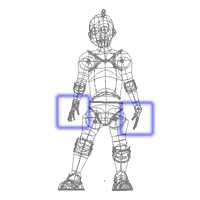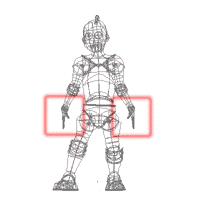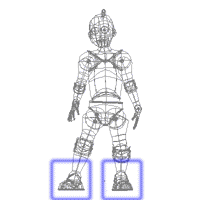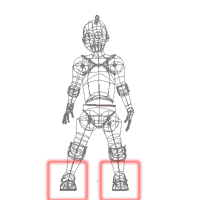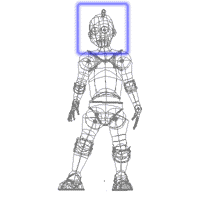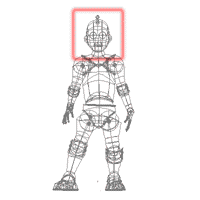The most basic aspects of stance are, fortunately,
also the simplest. Simple, of course, doesn't mean easy. Keeping
these two concepts in mind throughout all of your animations will prove
very difficult indeed, but also very helpful.
The first thing to do to insure that a character looks real is to break
every appearance of symmetry that you can manage. Yes, in a perfect
world, action would be symmetric and perfectly balanced. But a perfect
world is precisely what we're trying to avoid animating.
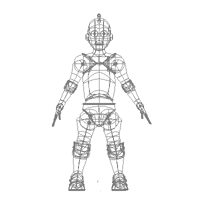
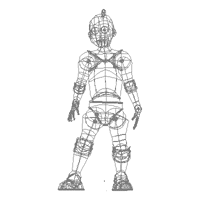 A
character that is posed symmetrically looks rigid and mechanical.
This might be good for certain characters, but for most characters, even
robots, you want a more fluid appearance.
A
character that is posed symmetrically looks rigid and mechanical.
This might be good for certain characters, but for most characters, even
robots, you want a more fluid appearance.
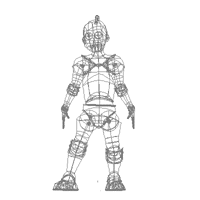 If some of the
character is non-symmetrical, but there are small areas of symmetry, such
as the hands being in the same position, then those areas will look locally
mechanical, giving a slightly rigid appearance to the model as a whole.
If some of the
character is non-symmetrical, but there are small areas of symmetry, such
as the hands being in the same position, then those areas will look locally
mechanical, giving a slightly rigid appearance to the model as a whole.
To avoid symmetry, it helps to know where it hides. Hands and feet
are a major source of problems. A too-perfect arrangement of the
hips or shoulders, or a head facing directly and levelly into the camera,
can also cause problems. By looking over these aspects at each major
pose of your animations, you can avoid accidentally falling into the trap
of symmetry.
Next Page
Previous Page
Back to Dojo

 A
character that is posed symmetrically looks rigid and mechanical.
This might be good for certain characters, but for most characters, even
robots, you want a more fluid appearance.
A
character that is posed symmetrically looks rigid and mechanical.
This might be good for certain characters, but for most characters, even
robots, you want a more fluid appearance.
 If some of the
character is non-symmetrical, but there are small areas of symmetry, such
as the hands being in the same position, then those areas will look locally
mechanical, giving a slightly rigid appearance to the model as a whole.
If some of the
character is non-symmetrical, but there are small areas of symmetry, such
as the hands being in the same position, then those areas will look locally
mechanical, giving a slightly rigid appearance to the model as a whole.
